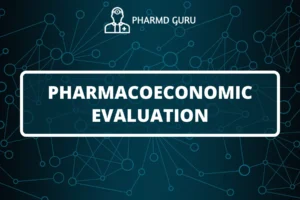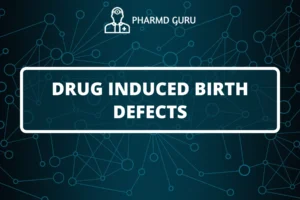Pharmacoepidemiology is a dynamic and interdisciplinary field that combines principles from pharmacology and epidemiology to study the utilization, effects, and safety of medications in populations. It plays a critical role in assessing the real-world impact of drugs and informing evidence-based healthcare decisions. In this article, we will delve into the definition, introduction, origin, evolution, need, aims, and application of pharmacoepidemiology.
SCROLL DOWN TO THE BOTTOM OF THIS PAGE FOR ACTUAL NOTES.
Definition and Introduction to Pharmacoepidemiology:
Pharmacoepidemiology can be defined as the study of the effects of medications in populations, including their utilization, safety, and outcomes. It involves the application of epidemiological methods to assess the benefits, risks, and patterns of medication use in real-world settings. By examining the relationships between drugs and health outcomes, pharmacoepidemiology provides valuable insights into the effectiveness and safety of medications, guiding healthcare practice and policy.
Origin of Pharmacoepidemiology and its Evolution:
The roots of pharmacoepidemiology can be traced back to the mid-20th century when concerns arose regarding the safety and effectiveness of medications. The thalidomide tragedy in the 1960s, which resulted in severe birth defects, highlighted the need for systematic monitoring and evaluation of drug effects. Since then, pharmacoepidemiology has evolved significantly in response to growing demands for evidence-based medicine and the availability of advanced research methodologies and data sources. It has embraced innovative approaches, such as data linkage, electronic health records, and advanced statistical techniques, to address complex research questions.
The Need for Pharmacoepidemiology:
Pharmacoepidemiology addresses several important needs in healthcare:
- Safety Assessment: By monitoring and evaluating medication safety in real-world settings, pharmacoepidemiology helps identify and characterize adverse drug reactions, contributing to patient safety and regulatory decision-making.
- Effectiveness Evaluation: It assesses the real-world effectiveness of medications by studying their impact on health outcomes and comparing their benefits and risks across diverse populations and healthcare settings.
- Risk-Benefit Analysis: Pharmacoepidemiology provides crucial evidence for assessing the balance between the risks and benefits of medications, guiding regulatory agencies, healthcare providers, and patients in making informed decisions.
- Comparative Effectiveness Research: By comparing different treatment options, pharmacoepidemiology assists in determining the most effective and safe therapeutic approaches, supporting personalized medicine and optimal resource allocation.
Aims of Pharmacoepidemiology:
The primary aims of pharmacoepidemiology include:
- Describing Medication Use: It aims to quantify the patterns, trends, and determinants of medication use in populations, shedding light on factors that influence prescribing practices and helping identify opportunities for improvement.
- Assessing Medication Safety: Pharmacoepidemiology investigates the risks and safety profiles of medications, including potential adverse effects, drug interactions, and long-term consequences, to ensure their appropriate use and minimize harm.
- Evaluating Medication Effectiveness: It examines the real-world effectiveness of medications, assessing their impact on health outcomes, disease progression, symptom management, and quality of life.
- Informing Policy and Practice: Pharmacoepidemiology generates evidence to inform healthcare policies, clinical guidelines, and individual treatment decisions, promoting safe, effective, and cost-conscious medication use.
Application of Pharmacoepidemiology:
Pharmacoepidemiology has diverse applications in health care and research, including:
- Drug Safety Surveillance: It plays a vital role in post-marketing surveillance, detecting and evaluating adverse drug reactions and ensuring the ongoing safety of medications.
- Drug Utilization Studies: Pharmacoepidemiology examines medication utilization patterns, including prescribing practices, adherence, and factors influencing medication use, to optimize healthcare delivery.
- Comparative Effectiveness Research: It enables the comparison of different treatment options to identify the most effective and safe interventions for specific patient populations.
- Risk Management and Pharmacovigilance: Pharmacoepidemiology contributes to risk management strategies, including the development of risk minimization plans, signal detection, and evaluation of medication safety profiles.
- Health Outcomes Research: It investigates the impact of medications on patient outcomes, quality of life, and healthcare utilization, providing evidence for healthcare decision-making.
- Health Policy and Regulation: Pharmacoepidemiology informs the development of healthcare policies, clinical guidelines, and regulatory decisions regarding drug approvals, labeling, and post-marketing commitments.
ACTUAL NOTES:




